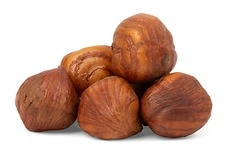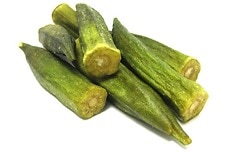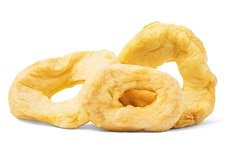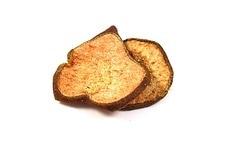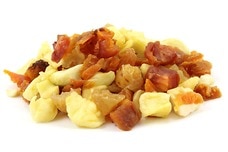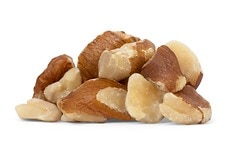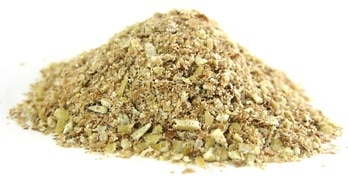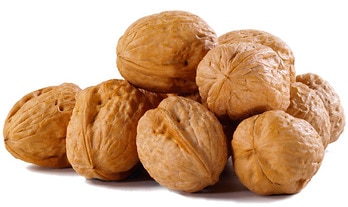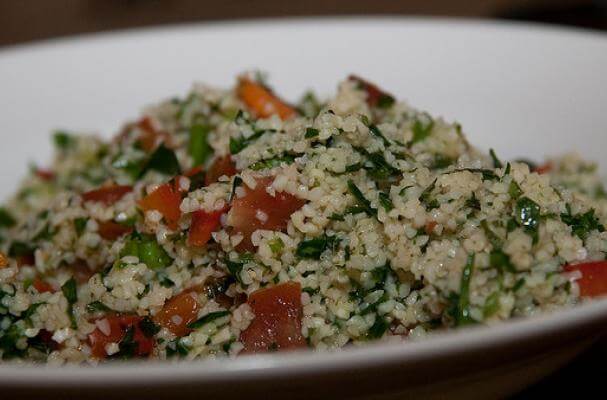Cholesterol
Our Health Nut and Registered Dietitian knows that diet plays an important role in managing cholesterol. Whether you’re trying to understand the relationship between cholesterol and health, or just looking for heart-friendly snacks, you’ve come to the right place.
What is Cholesterol and Why Does It Matter?
Cholesterol gets a bad rap, although it’s essential for the normal function of our bodies. This wax-like substance helps us make hormones, vitamin D, and promotes food digestion. It’s found throughout our bloodstream and in all of our cells, and, at normal levels, that’s a good thing. However, when too much cholesterol builds up in the blood and starts to block arteries, that’s when we have cause for concern.
Types of Cholesterol
To understand the body’s love-hate relationship with cholesterol, let’s take a look at the way it travels throughout the bloodstream. Cholesterol is carried by two different types of lipoproteins - low-density lipoprotein (LDL) and high-density lipoprotein (HDL).
High levels of “LDL” cholesterol, also referred to as “bad” cholesterol, can lead to the build-up of cholesterol in the arteries. This accumulation of plaque causes the arteries to narrow and in turn restricts blood flow, which increases the risk for coronary heart disease, stroke, and other complications.
The other kind, “HDL” cholesterol, is referred to as “good” cholesterol because it is much friendlier by nature. HDL cholesterol doesn’t clog arteries, but instead travels throughout the bloodstream, removes LDL cholesterol, and sends it to the liver to be disposed. Our good “HDL” cholesterol also repairs damaged blood vessels and can help combat heart disease. That’s why it’s important to keep your LDL levels low, and your HDL levels high.
Conditions Related to High Cholesterol
People with high LDL cholesterol levels are at risk for developing coronary heart disease. High cholesterol contributes to the build-up of plaque in the arteries, a condition known as atherosclerosis. This narrowing of the arteries is dangerous because it limits blood flow. The blockage of blood flow to the heart can result in a heart attack, and blockage to the brain can result in a stroke. A condition known as peripheral vascular disease is caused by the narrowing of arteries outside of the heart or brain, such as in the legs.
Other conditions related to high cholesterol include diabetes and high blood pressure. People with diabetes tend to have lower “good” cholesterol and higher “bad” cholesterol due to the sticky nature of LDL particles in their bloodstream. High blood pressure and high cholesterol also go hand in hand because narrowed arteries cause the heart to work harder and strain to pump blood through them. This results in higher than normal blood pressure, also known as hypertension.
How Can I Manage My Cholesterol Levels?
It’s important to modify your diet and lifestyle to help control your cholesterol levels. Here are some tips to follow:
1) Limit your intake of foods that contain high levels of saturated fat and stay away from trans fat. Red meat and dairy products such as butter and cheese contain high levels of saturated fat. The American Heart Association recommends reducing the saturated fat in your diet to no more than 5 to 6 percent of total calories. For reference, if you consume 2,000 calories per day, that would be about 11 to 13 grams of saturated fat. To avoid trans fat, you should stay away from any foods with partially hydrogenated oil as an ingredient.
2) Focus on fiber (especially soluble fiber). It’s essential to get enough fiber in your diet. Sadly, the average daily intake of fiber in the United States is only about 15 grams - much lower than the daily recommended levels. Snacking on nuts and dried fruit can help you meet your daily fiber goals.
The recommended dietary reference intake (DRI) for dietary fiber is 14 grams of fiber per 1000 calories or at least 25 grams per day for adult women and 38 grams per day for adult men. These DRI’s are based on the amount of fiber observed to protect against heart disease.
Soluble fiber is very important for anyone looking to improve their cholesterol levels. Soluble fiber attracts water, slows digestion, and can help lower bad (LDL) cholesterol levels by interfering with the absorption of dietary cholesterol. For overall health, look for foods that provide a source of both soluble and insoluble fiber, like chia seeds.
3) Be active. Studies show that regular physical activity can help lower LDL “bad” cholesterol and raise HDL “good” cholesterol. One reason for this is because exercising can help you lose and maintain weight, which decreases the amount of LDL cholesterol in the blood. Other research suggests that exercise can actually help your body expel this type of cholesterol.
As you focus on your cholesterol levels, remember to choose foods and snacks that are low in saturated fat and boost overall fiber intake. All of the snack suggestions listed below are RD-approved. However, this page is for informational purposes only and shouldn't replace medical advice.
Try some Cholesterol-Lowering Foods!
Healthy Eating
- Healthy Snacks
- Healthy Highlights
- 5 Uses for Cacao Powder
- 5 Ways to Eat Farro
- 6 Best Gluten-Free Foods
- Alcohol and the Body
- Almond Flour Recipes
- Anti-Aging Superfoods
- Beat the Afternoon Slump
- Benefits of a Plant-Based Diet
- Benefits of Baobab
- Benefits of Cashews
- Benefits of Coconut Oil for Hair
- Benefits of Coconuts
- Benefits of Dates
- Benefits of Fenugreek
- Benefits of Garcinia Cambogia
- Benefits of Goji Berries
- Benefits of Kale Chips
- Benefits of Monk Fruit Sweetener
- Benefits of Peanuts
- Benefits of Pecans
- Benefits of Pistachios
- Benefits of Pumpkin Seeds
- Benefits of Spelt Flour
- Benefits of Steel Cut Oats
- Benefits of Sunflower Seeds
- Benefits of Tiger Nuts
- Benefits of Turmeric
- Benefits of Walnuts
- Benefits of Wheatgrass
- Best Food Fads
- Cacao vs Cocoa
- Caffeine-Free Energy Foods
- Chocolate That's Good for You
- Diet vs. Exercise
- Fat Burning Foods
- Food Myths Debunked
- Foods for Bone Density
- Foods for Colon Health
- Foods for Healthy Hair
- Foods for Healthy Skin
- Foods to Help Sleep
- Foods to Reduce Stress
- Green Tea Benefits
- Healthy Baking Flours
- Heart Healthy Habits
- High Protein Health Risks
- How to Boost Your Metabolism
- How to Lose Weight While Aging
- How to Throw a Vegan BBQ
- Kaniwa vs Quinoa
- Little Health Foods
- Low-Carb: Fad or Friend?
- Making Healthier Desserts
- Mediterranean Diet Meal Plan
- Natural Beauty Products
- Nuts for Weight Loss
- Preparing Vegan Meals
- Preventing Muscle Degeneration
- Rare Superfoods
- Reduce Sugar Intake
- Save Time By Going Vegan
- Smarter Snack Swaps
- Smoothie Ingredients
- Soy Protein vs Whey Protein
- Starting a Plant-Based Diet
- Steel Cut vs Rolled Oats
- Sugar Substitutes
- Vegan Proteins
- Vegan Substitutions for Fall Recipes
- Why Go Vegan
- Healthy Meals
- Healthy Recipes
- Sports Nutrition
- Vitamins, Minerals & Nutrients

